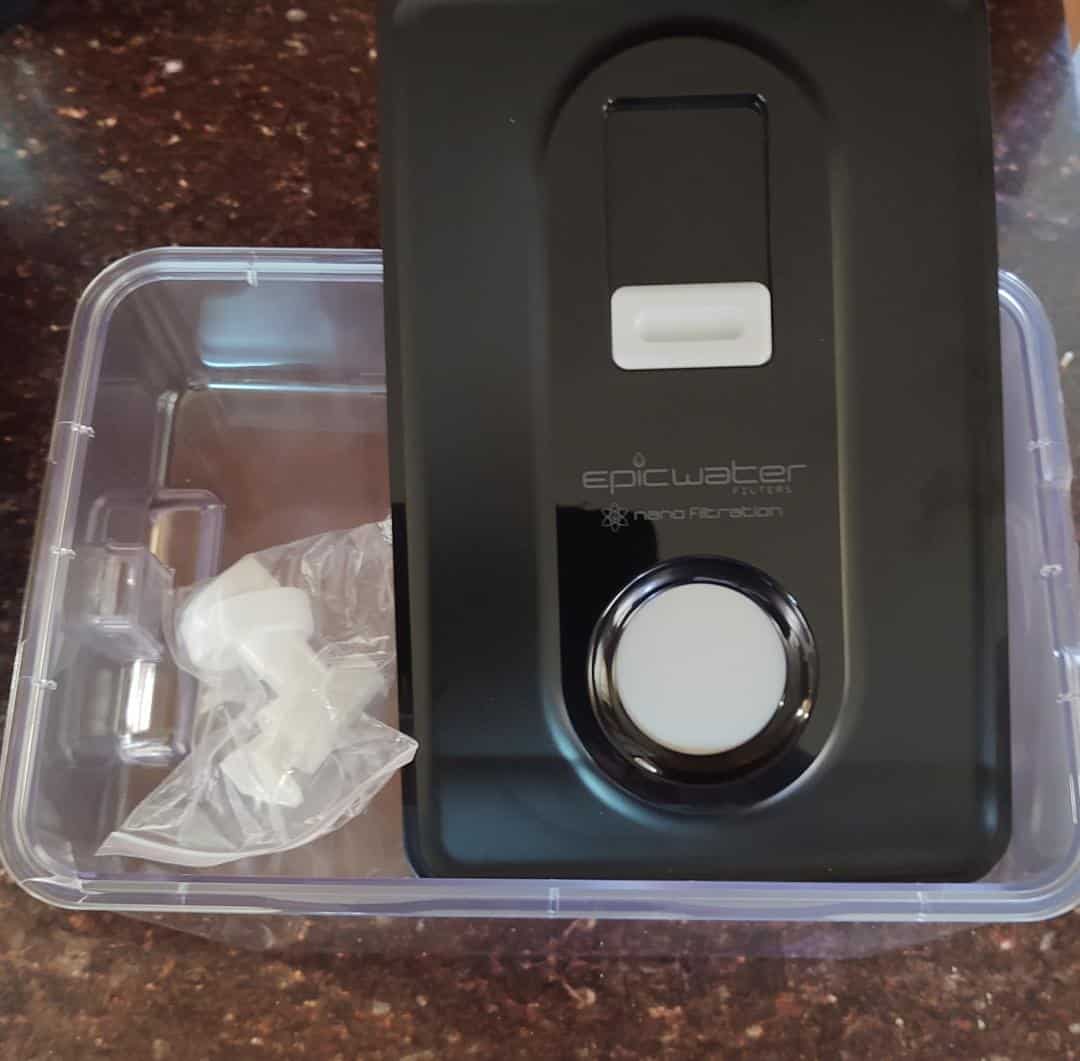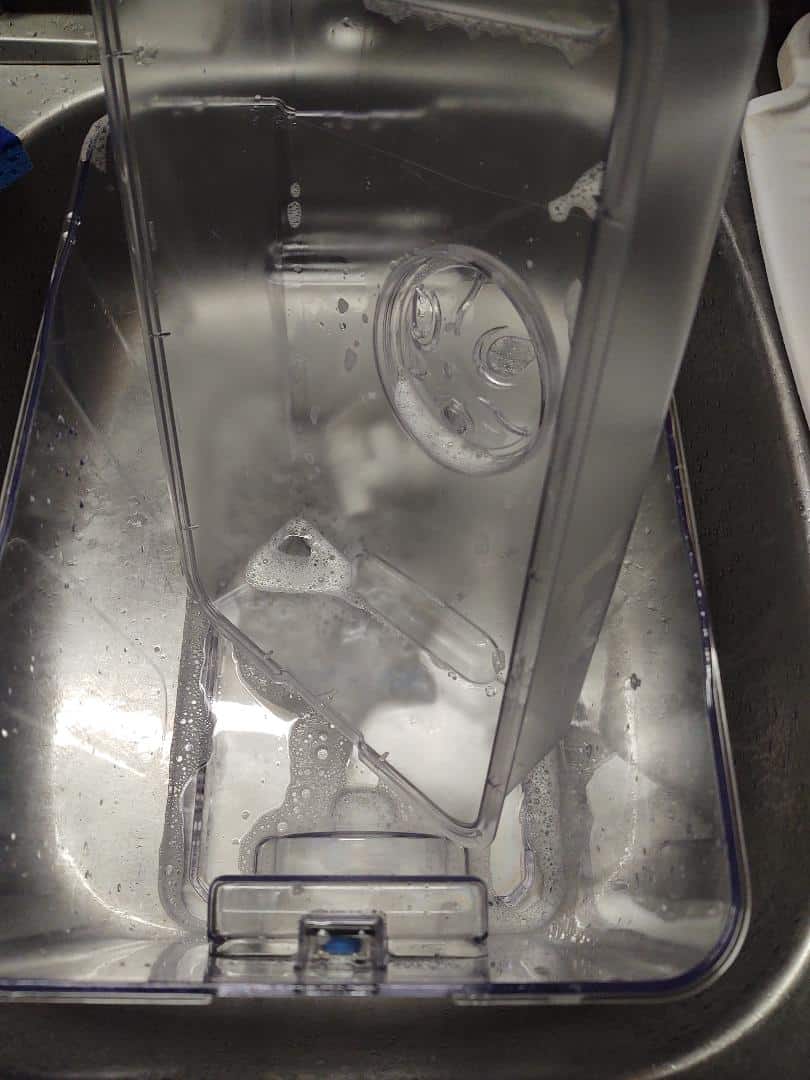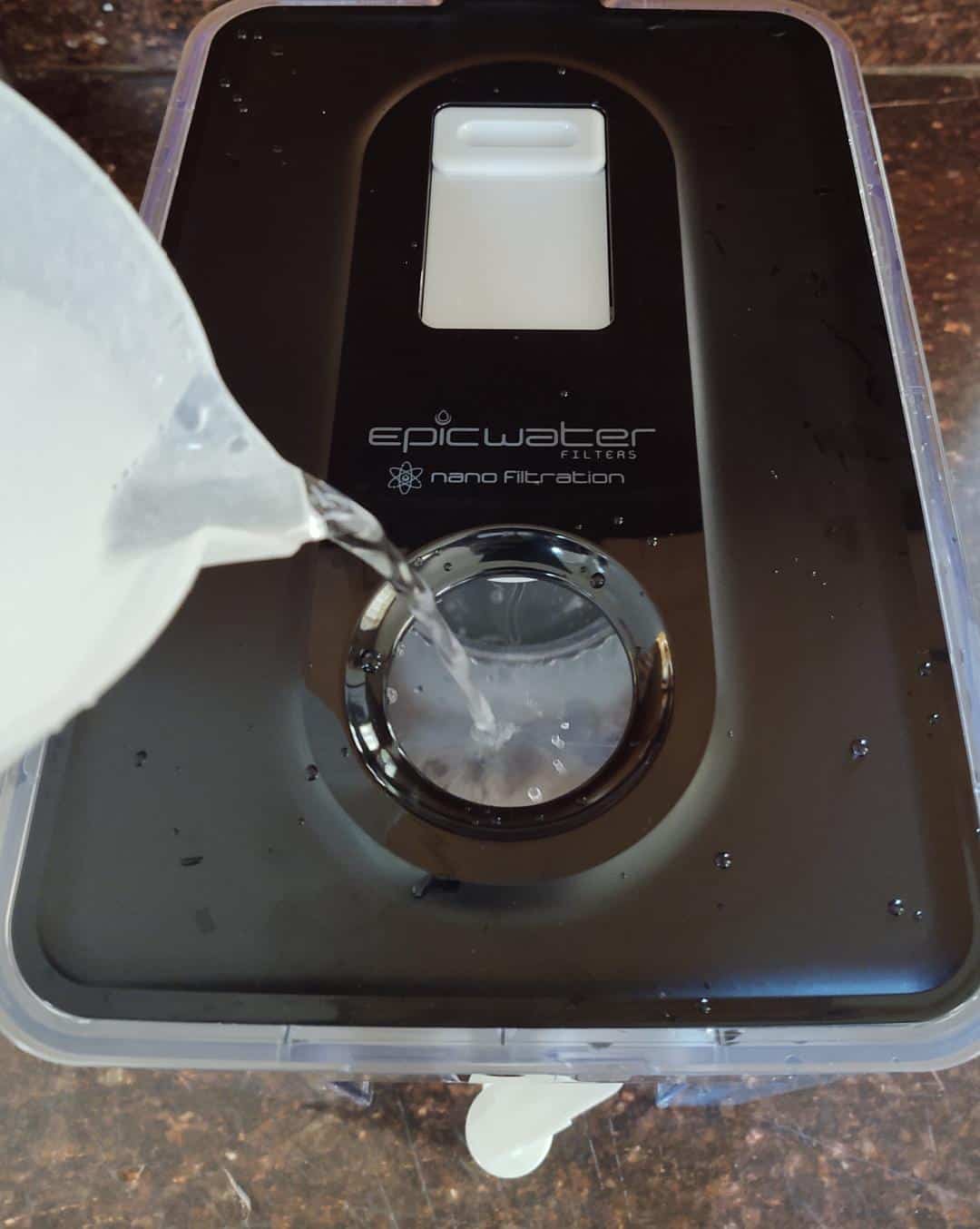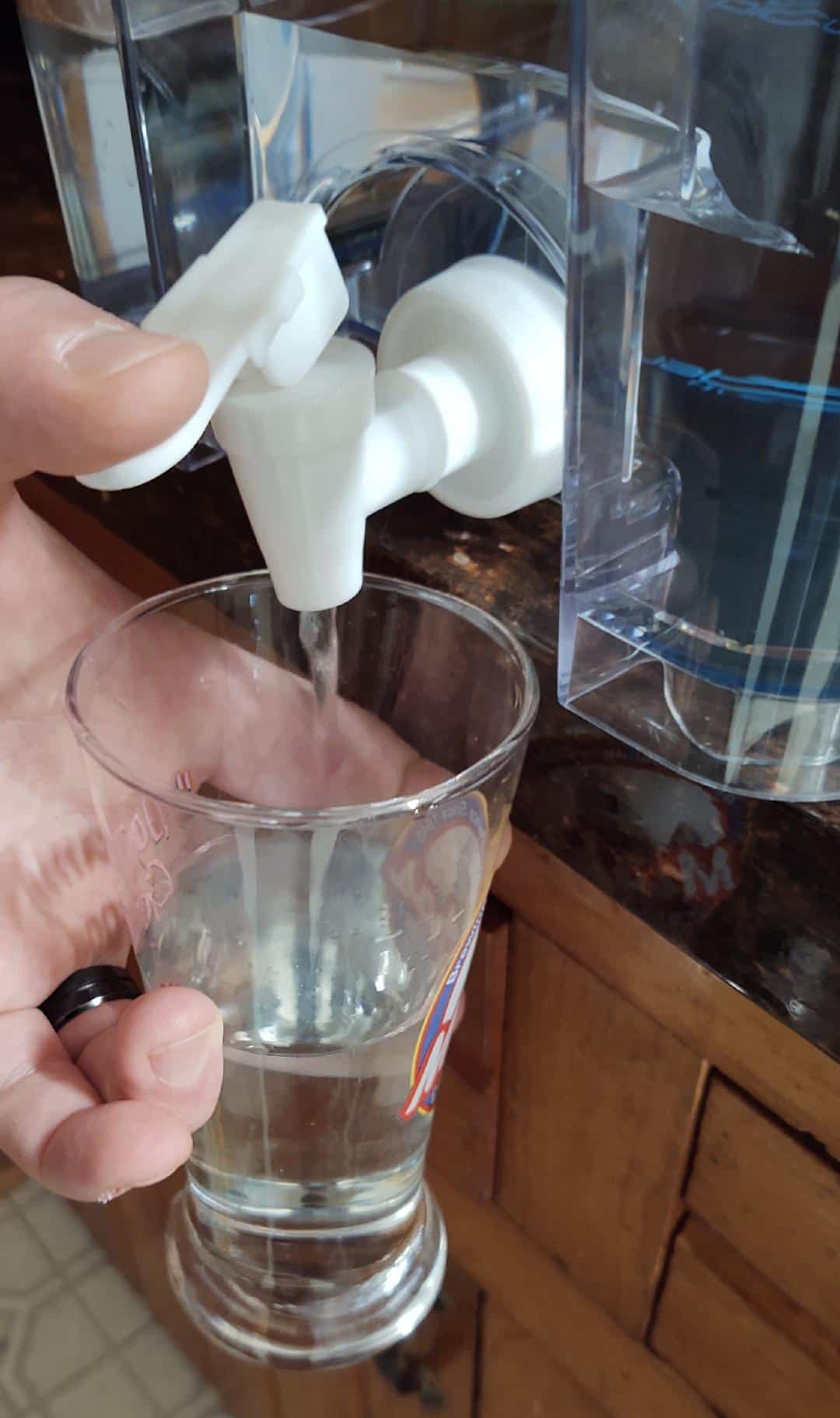I believe more and more people are realizing the health benefits of drinking water but that all starts with obtaining clean water first.
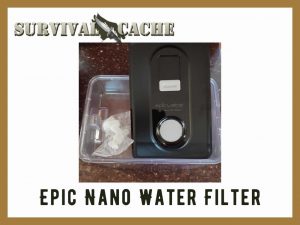
Some people are blessed with the ability to turn on their tap, take a drink, and not have to worry about the safety of what they just consumed.
But not everyone is so lucky. They may live in an area with a poor water management system, an outdated infrastructure, or they may not have a nearby source of clean water.
Luckily, filtering water at home has become easier and easier. Today I will be looking at one such way. Recently, I received the Epic Nano Water Filter Dispenser and have been trying it out for a while. Before getting into my thoughts on it, let me first share with you what this dispenser has to offer.
SKIP AHEAD
Epic Nano Water Filter Specifications
Dimensions
The dispenser measures in at 12” x 9” x 8” and holds approximately 8.5 liters of water.
Filter
The filter removes up 99.999% of tap water contaminants that include bacteria, giardia, cryptosporidium, and viruses while leaving behind important minerals such as calcium, magnesium, and potassium.
The filter is also replaceable and can process up to 150 gallons of water.
Less Waste
150 gallons of water per filter equates to over one thousand plastic bottles of water that are not used. This is also a good way to store water for long-term use.
Country of Origin
The filters are made in the USA
Assembling The Product
The dispenser comes in a few separate pieces so some assembly is required, but do not worry because you will not need any tools and it only takes about a minute to do so.
As with all products, it is a great idea to read the instructions first. Thankfully Epic provides an easy-to-follow manual with pictures so even I could not screw it up.
The first order of business was to briefly wash all the components except for the filter. The filter is easily removed by unscrewing it counterclockwise or “lefty loosey” for us old-timers.
I set the filter off to the side and washed the interior of the dispenser, reservoir, lid, and spigot with a soft sponge and warm soapy water.
On the exterior of the dispenser, there is a small digital display which I took caution not to get wet.
After everything was washed and dried, I screwed the filter back onto the bottom of the reservoir and placed the reservoir on top of the dispenser. The last piece to assemble was the spigot, which screws onto the bottom port by turning it in a clockwise direction.
Hands-On Review
Once everything is assembled it is recommended to run two full reservoirs worth of water through the filter. This simply helps to flush out any residue carbon that may be present.
When filling the reservoir for the first time be aware that it will take a little bit of time for the filter to become saturated and for water to start flowing out of it. In my case, I did not see water dripping out of it for about four to five minutes.
Filling the reservoir is easy and can be done in two different ways. The first is by removing the black lid and filling the reservoir with a pitcher or by setting it under a faucet.
But since most people will likely leave the dispenser in their refrigerator, there is a quicker option. On top of the lid is a sliding mechanism that opens and closes a small hole. By sliding it to the open position the dispenser can be left in the refrigerator and filled with a pitcher.
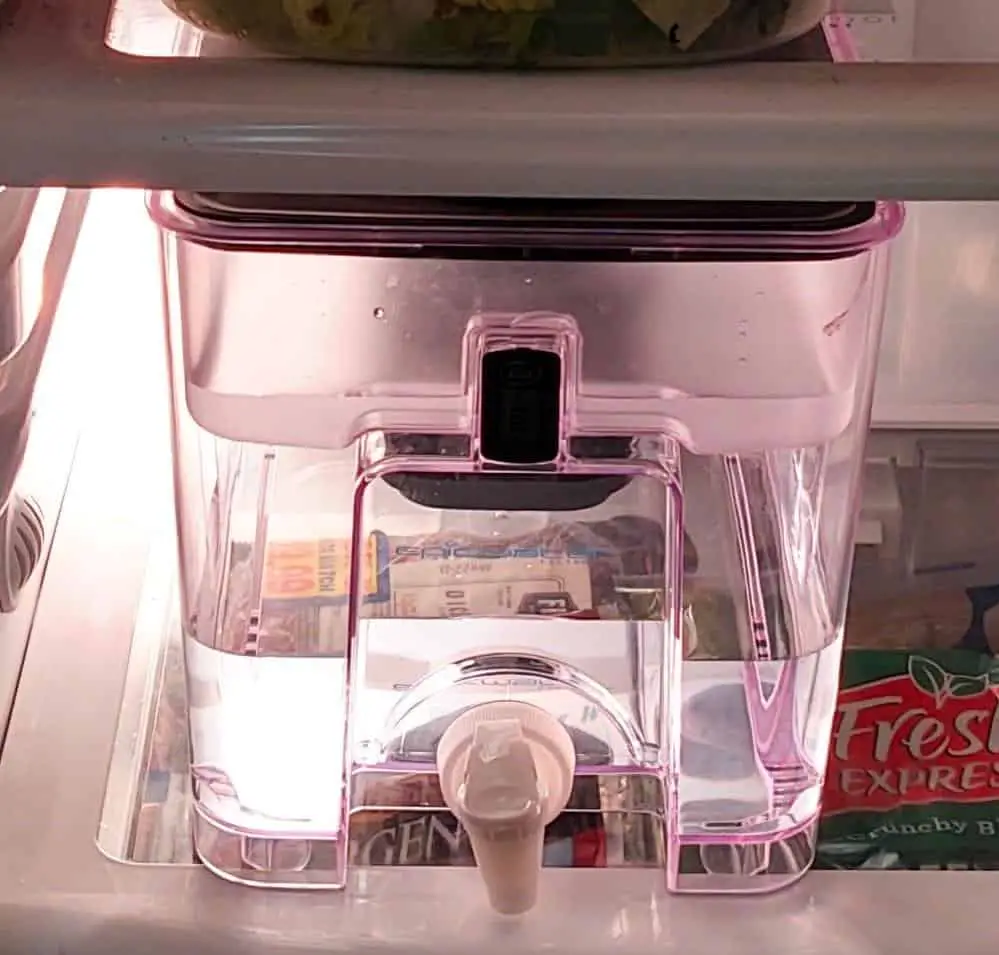
Filter Timer
On the exterior of the dispenser, above the spigot, there is a small digital timer. Pushing the start button initiates a ninety-day countdown.
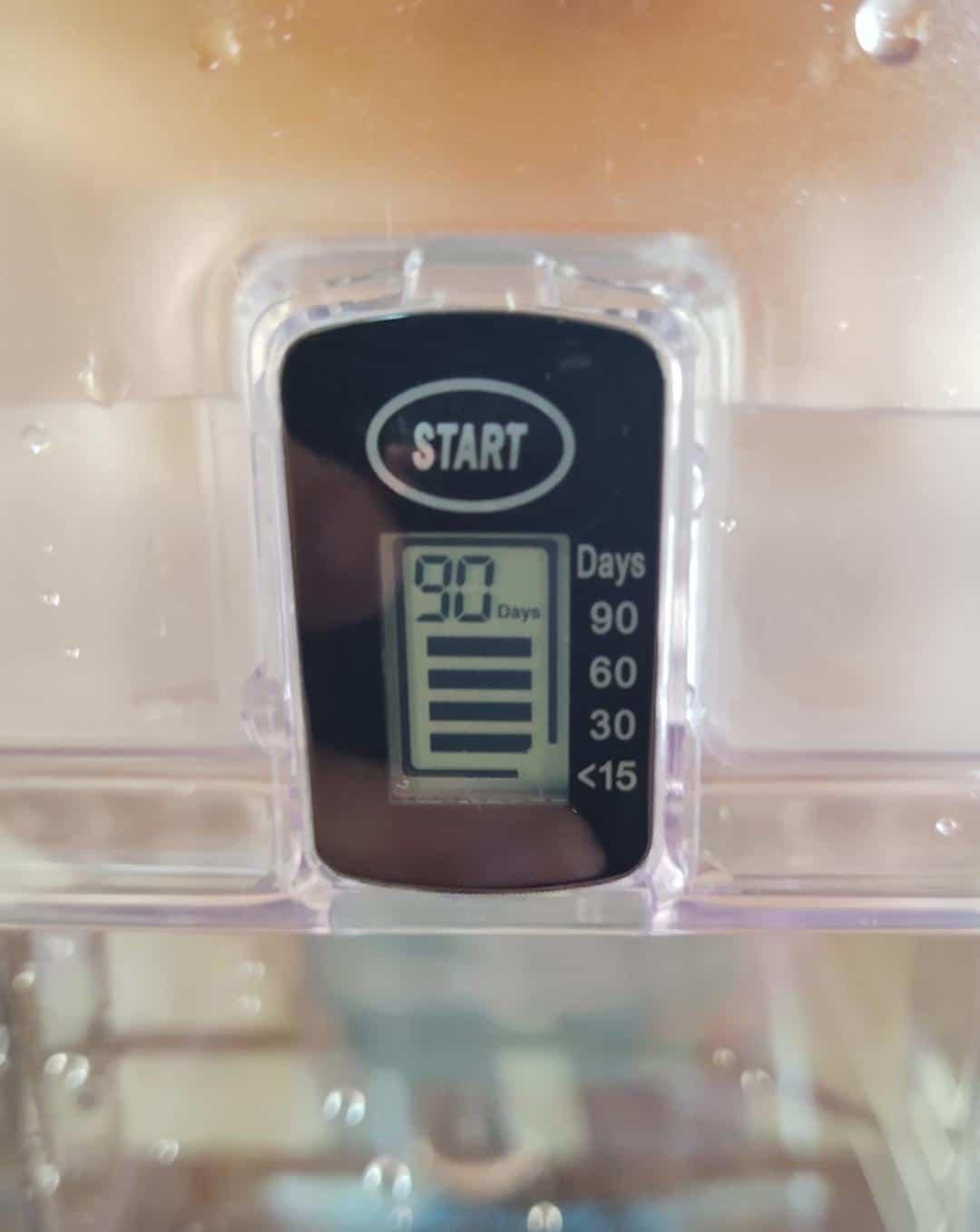
The filter in the dispenser can process up to 150 gallons of water. It is recommended to change the filter three to four times a year, which averages out to be once every ninety days. If you do not use 150 gallons of water within that period the filter can be used past ninety days, but it is still a good idea to change it out after six months.
Spigot
While I was flushing out the filter, I noticed that water was leaking out from around the spigot. After the filter had been flushed, I dumped the water out, unscrewed the spigot, and took a closer look at it.
There did not appear to be any cracks in the plastic and the O-ring also appeared to be in good shape, so I replaced the spigot and made sure there was a good seal while screwing it back on.
Since everything is made out of plastic, I did not want to overtighten the spigot and risk cracking it or the dispenser but I did use a little extra force the second time around.
With the spigot installed again, I filled up the reservoir and watched as the filter filled up the dispenser. This time I hung the spigot end over the sink just in case there was another leak. Thankfully, the problem had been fixed and there was no more leaking.
What most likely happened was that I did not screw the spigot on tight enough to form a good seal. I would suggest hanging the spigot end of the dispenser over a sink basin the first time you fill it with water to make sure it is installed properly. This way you can avoid any undue puddles on the counter or in your refrigerator.
Taste Test
The dispenser had been washed out, the filter flushed, and my leaky spigot problem fixed. I filled the reservoir up for the third time and waited until the dispenser filled up.
I grabbed one of my favorite glasses, placed it under the spigot, and opened it up. The water looked good, smelled good, and yes, it tasted good as well!
I could definitely tell a positive difference between the way the filtered water tasted versus my tap water. The filtered water did not have any smell or lingering after flavors. It was crisp and clean.
This whole system is lightweight and can easily be transported, which means I can pack it in the car for a road trip or take it to my favorite camping spot. Need some fresh water at an out-of-the-way worksite or a secluded picnic spot? I think this filter is just the right size to be carried for such purposes.
Pros
- Affordable
- Filters up to 150 gallons
- Easy to assemble
- Stores easily on a refrigerator shelf or a countertop
Cons
- After a week of testing, I do not have anything negative to say about this product
FAQs
What exactly does this product filter out?
A full listing of the official test results for the Nano Water Filter can be viewed here.
Is this product dishwasher safe?
Yes, it is! However, the digital timer and the filter should not be placed into a dishwasher nor should these two items be washed. Even though the rest of the parts are dishwasher safe, Epic recommends hand washing with warm water and mild soap, lemon juice, or baking soda.
What shouldn’t I do with this product?
According to Epic’s webpage, “things to never do with our Nano Filter,” are:
- Do not place the filter in the freezer
- Do not fill with hot water
- Do not use with saltwater
Verdict
In the short time that I have had this filter, I have enjoyed using it and will continue to do so. I have a rather small refrigerator so it will probably say on the countertop for the time being but that has not detoured its use among my family.
I think this system is affordable, easy to assemble and use, and lightweight so that it can easily be taken wherever your life takes you.
Most importantly though, it filters out a lot of contaminants that we find in our water, even at home. You should not have to worry about what is in your drinking water and with this filter, I think that is one less thing you will have to worry about.
Thanks for reading and be sure to sound off in the comment section below!


